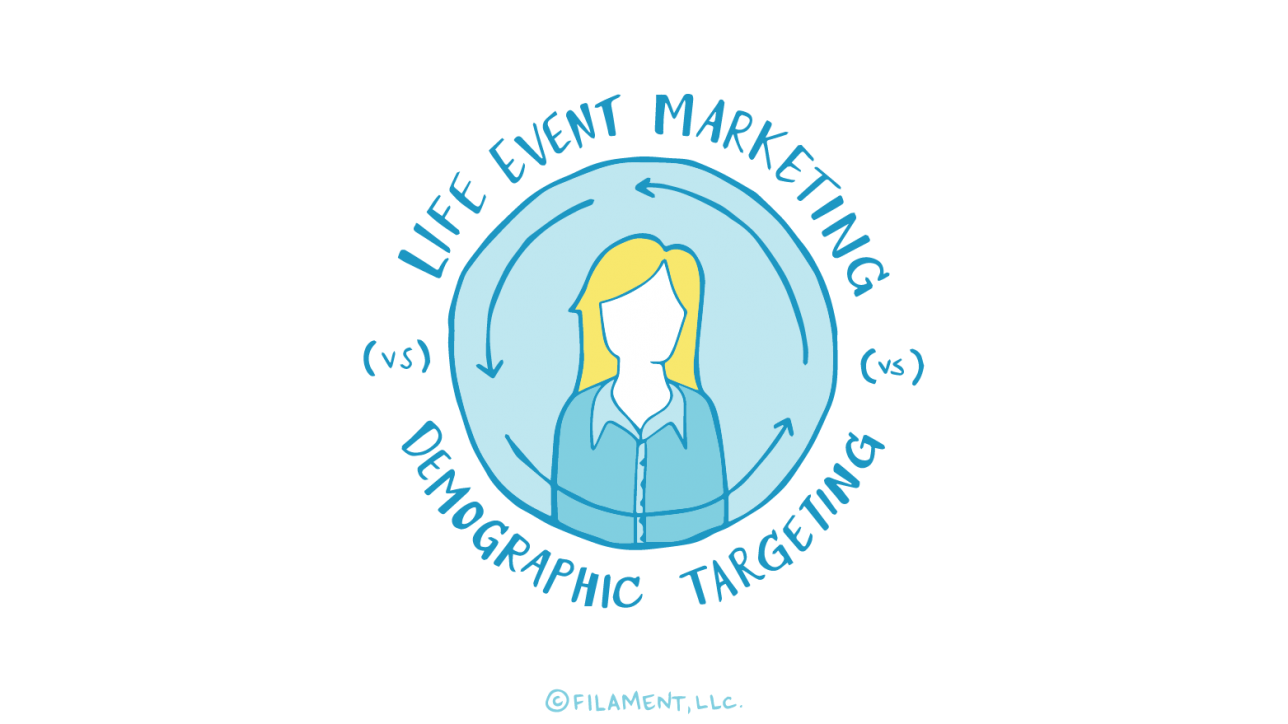We’re going to say it straight: life event marketing is more effective than demographic targeting. Why? Because life events drastically affect buying patterns in specific ways while demographic targeting cuts a broad swath leaving room for inaccurate targeting.
Let’s take a closer look at the reasons behind this. Within life event segments, we can reasonably know a potential customer’s wants and needs. College grads will be searching for a reliable and affordable car to get to their first job. Retirees are looking to travel. New moms are in the market for dipes, wipes, stroller, crib, nursery furniture, and more baby gear galore. New homeowners will be shopping around for homeowner’s insurance, home hardware, yard equipment, and more. On the other hand, within demographic segments, there are significant disparities in wants and needs.
Life event–triggered marketing is a great opportunity for capturing a high level of customer interest. Customers experiencing the same major life changes are uniquely predisposed to buying based on the event taking place in their lives. It’s the perfect time to reach out to potential customers and continue to build relationships with the customers you already have with lifecycle marketing.
This type of targeting is much more specific than, say, segmenting by age or gender since you’re unable to specifically target the needs and wants within demographic groups. For example, not everyone in their early twenties is attending college. However, if you have a group of young people you know are heading off to college, you can speak directly to their need for college essentials.
Add to this the fact that your customers want to know about relevant offers that will help them save time and make their lives easier. Providing relevant, useful information at the right time opens doors to building lasting relationships with customers whom you will then nurture along their customer lifecycle path toward brand advocacy, which leads to them sharing the good news about what you do and what you offer with their friends and family. You can use life event–driven marketing to start that journey more effectively.
Yes, demographic information—age, income, gender, ethnic background, etc.—is easy to collect and easy to segment. And, yes, it can be cheaper to segment your audience demographically. However, it’s just not as effective. You get what you pay for, as they say.
Does this mean you want to stop segmenting by demographics once and for all? Probably not. It can still be a useful strategy to employ – depending on your industry – especially when you don’t have life event data. Just don’t put all your marketing eggs in that one targeting basket. Make an effort to employ life-event marketing where it makes sense for your customers and your business, whether that be with your SEO efforts or in integrating lifecycle marketing and your social strategy.
What experience has your company had building relationships with customers using life event–triggered messaging? Do you find demographic targeting to be more valuable within your industry? We’d love to read your insights in our comments section below.
If you’re ready to start crafting messages around specific life events, check out Filament’s work to see how we can help you build lifelong relationships with customers and create a customer-driven marketing strategy.


